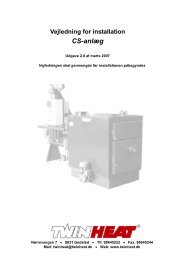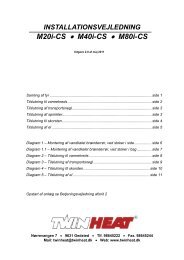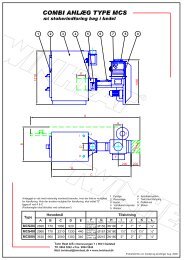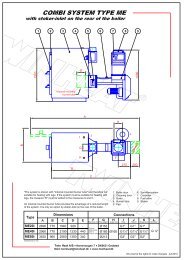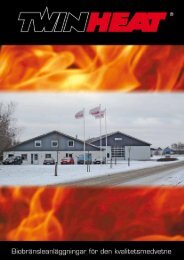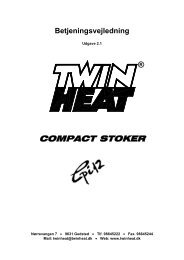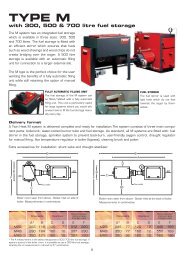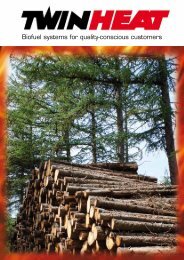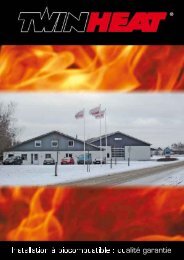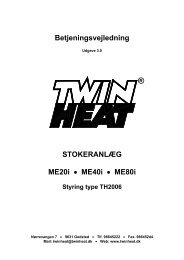Diagram 2 - TwinHeat
Diagram 2 - TwinHeat
Diagram 2 - TwinHeat
You also want an ePaper? Increase the reach of your titles
YUMPU automatically turns print PDFs into web optimized ePapers that Google loves.
5<br />
Connection of the safety heat exchanger (Quenching coil)<br />
(Only for boilers provided with safety heat exchanger)<br />
The boiler has a build-in safety<br />
heat exchanger which cools the<br />
boiler in case of pump failure or<br />
the like. The system will be<br />
activated if the water<br />
temperature in the boiler<br />
exceeds 95°C.<br />
Drain from quenching coil<br />
Supply cold water for<br />
quenching coil<br />
Thermal safety valve - 95°C<br />
Temperature sensor<br />
for thermal safety valve<br />
The thermal safety valve must<br />
be connected to constant water<br />
pressure from a G¾”/22mm<br />
pipe. The water pressure must<br />
be minimum 2 bar and the<br />
temperature maximum 15°C<br />
There must be no shutoff valves<br />
on the pipe supplying the valve.<br />
Flush the pipes before<br />
connecting to the thermal safety<br />
valve. Dirt or metal shavings<br />
can cause the valve to<br />
malfunction.<br />
The return drain from the safety heat exchanger G¾” must be connected to a<br />
drain.<br />
The pipe used to connect to the drain must have a sufficient size to avoid the<br />
emergence of backpressure.<br />
After installation the system must be tested to ensure free passage trough the<br />
safety heat exchanger. The thermal safety valve can be manually activated by<br />
pressing the red cap.<br />
Connection to the chimney<br />
See diagram 3<br />
Further information is in the user manual, section. 7<br />
In order to get a good heating economy and to avoid smoke problems you must<br />
connect the boiler to a suitable chimney. The boiler should be placed as close<br />
to the chimney as possible.<br />
Should the chimney be too unsuitable or under difficult draft conditions you<br />
might have to install a flue fan.<br />
It is in general recommended to install a draft stabilizer (See diagram 3)<br />
A chimney with unstable draft can case unstable running conditions of the plant.<br />
INSTALLATION



